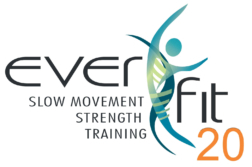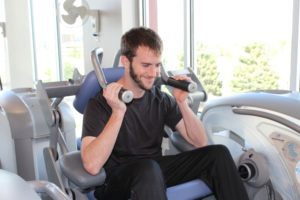Age-related sarcopenia can lead to severe wasting of the structures, and many of the waistline muscles are at the front line of this insidious assault.
Today, over 65 million Americans suffer from back pain. In fact, back pain represents the second most common reason that anyone visits the doctor. Quizzically, treating back pain has become the ire of physicians because there is often so little that they can do to help. Most doctors prescribe passive therapies like NSAIDs (nonsteroidal anti-inflammatory drugs) or muscle relaxants. Others do nothing at all for this common ailment, citing that the greater majority of back pain will resolve itself over time.
But for many, back pain doesn’t resolve itself. As more muscle is lost from inactivity and age, there is diminished range of motion in the spine, which in turn decreases support for any spinal movement as well as decreases overall trunk stability. Eventually, the lower back and waistline muscles become so weak that the surrounding structures also begin to suffer, leading to greater tension, stress, and a vicious cycle of inactivity and pain. As the muscles shrivel further over time, there is greater likelihood for injury. Ultimately, the condition becomes chronic and sufferers can fall into deep despair wondering if they will ever be able to move with the ease they once enjoyed.
But there is hope. With a comprehensive program of strength exercise for the muscles that extend, flex and rotate the spine, almost everyone can enjoy a strong, pain-free lower back. By stimulating strength in the muscles of the spine, including the numerous rotators, you can create the foundation for a midsection that not only resists injury, but one that can recover much faster, should injury occur.




